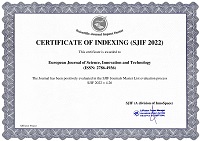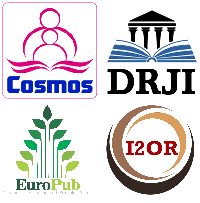How Sri Lanka Promotes Cultural Values through Social Media (Especial Reference to Selected YouTube Channels)
Abstract
This study examined how Sri Lanka portrayed culture in perspective of world tourism through YouTube. Central to the study is to find out what ways videos and information are used on promoting Sri Lankan culture through YouTube. YouTube videos which were published in 2023/2024 analyzed YouTube channels and the selected YouTubers were interviewed. An analysis of traveling videos of YouTubers was done to ascertain how Sri Lanka is portrayed in context of global tourism. The interviews and text analysis provided data needed to answer the research questions. Previous research findings and the text analysis revealed that the Sri Lanka YouTubers mostly introduce Sri Lanka as a destination for diving area and didn’t create a special channel for traveling. In conclusion the study suggested different areas for improvement so as to make Sri Lankan YouTubers more effective on advertising the tourism industry of the country globally as well as constructively attracting local people to engage as operators in tourism related business, while at the same time painting the image of the country so as to attract more foreign tourists.
References
Burgess, R. G. (1998). Studies in Qualitative Methodology: Computing and Qualitative Research. London: JAI Press.
Echtner, C. M., & Brent Ritchie, J. R. (1991). The meaning and measurement of destination image. The Journal of Tourism Studies, 14(1), 37-48.
Frey, L. R., Botan, C. H., & Kreps, G. L. (2000). Investigating Communication: An Introduction to Research Methods (2nd ed.). Boston: Allyn and Bacon.
Fusco Girad, L., Forte, B., et al. (2003). The Human Sustainable City Challenges and Perspective from the Habitat Agenda. Ashgate: Aldershot.
Goelder, C. R. & Brent Ritche, J. R. (2012). Tourism; Principle, Practices, Philosophies. New Jersey: John Willey & Son.
Harcup, T. (2000). Re-imaging a post-industrial city: The Leeds St Valentine's Fair as a civic spectacle. City, 4(2), 215-231.
Harcup, T. (2014). Oxford Dictionary of Journalism. United Kingdom: Oxford University Press.
Hart, C. (2008). Doing Your Master Dissertation. London: Sage Publications.
Kirshenblatt-Gimblett, B. & Bruner, E.M. (1989). Tourism. In International Encyclopedia of Communications (Vol. 4., p. 79). Oxford: Oxford University Press.
Lokumannage, A. (2020). Social media and its impact on adolescents’ sense of body image in Sri Lanka. International Journal of Multidisciplinary Studies, 7(2) 116-125.
McLuhan, M. (1964). Understanding Media: The Extensions of Man. New York: The New America Library, Inc.
Ritchie, J. B., & Zins, M. (1978). Culture as determinant of the attractiveness of a tourism region. Annals of Tourism Research, 5(2), 252-267.
Timothy, D.J. & Boyd, S.W. (2002). Heritage Tourism. Harlow: Prentice Hall.
Yang, C. C., Brown, B. B., & Braun, M. T. (2014). From Facebook to cell calls: Layers of electronic intimacy in college students’ interpersonal relationships. New Media & Society, 16(1), 5-23.
Yigitchanlar, T. (2009). Planning for Cultural Tourism: The Joined up Approaching. Paper presented at cities as Creative Spaces for Cultural Tourism Conference (CCSCT), Bagazici University, Istanbul, 19-21 November.
Copyright (c) 2024 Amila Lokumannage

This work is licensed under a Creative Commons Attribution 4.0 International License.


 ISSN
ISSN 











